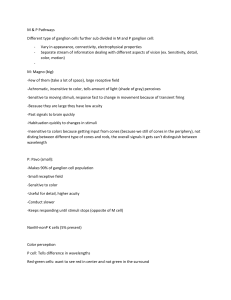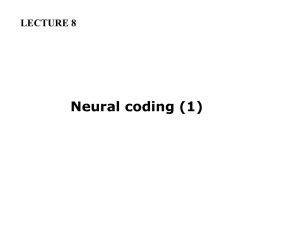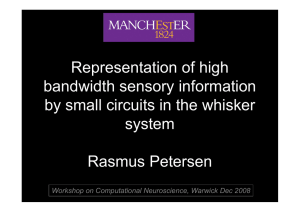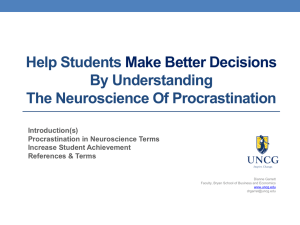Science 341
advertisement
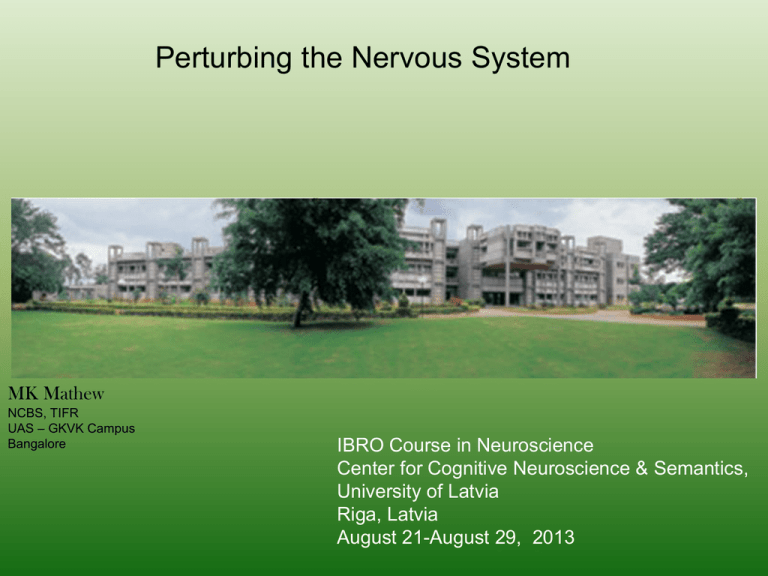
Perturbing the Nervous System MK Mathew NCBS, TIFR UAS – GKVK Campus Bangalore IBRO Course in Neuroscience Center for Cognitive Neuroscience & Semantics, University of Latvia Riga, Latvia August 21-August 29, 2013 Phineas Gage Accident 1848 Figure 1. Modeling the path of the tamping iron through the Gage skull and its effects on white matter structure. Van Horn JD, Irimia A, Torgerson CM, Chambers MC, et al. (2012) Mapping Connectivity Damage in the Case of Phineas Gage. PLoS ONE 7(5): e37454. doi:10.1371/journal.pone.0037454 http://www.plosone.org/article/info:doi/10.1371/journal.pone.0037454 Broca’s Area Broca's patients Leborgne: Almost completely unable to produce any words or phrases, he was able to repetitively produce only the word tan. After his death, a lesion was discovered on the surface of the left frontal lobe. Lelong: He also exhibited reduced productive speech. He could only say five words, 'yes,' 'no,' 'three,' 'always,' and 'lelo' (a mispronunciation of his own name). At autopsy, a lesion was also found in the same region of lateral frontal lobe as in Leborgne. These two cases led Broca to believe that speech was localized to this particular area. Henry Gustav Molaison Brenda Miller JZ Young (1937) J Exp Biol Figure 6 | Construction of receptive field maps using in vivo VSFP2 imaging. (a) Selection of six whiskers (C4, E3, D2, E1, B1 and C1) for sequential stimulation and receptive field imaging. (b) Identification of selected whisker in schematic representation of cortical barrel field. (c) Composite images showing responsive areas for each of the six whiskers from a single VSFP2.3 mouse. Responsive areas (shown in color) were determined by superimposing ΔR/R0 values greater than a threshold value of 90% peak amplitude on the baseline cyan/yellow fluorescence image (shown in grayscale). Arrows below indicate rostral (R), caudal (C), lateral (L) and medial (M) directions. Scale bar, 1 mm. Akemann et al (2010 Aug) Nature Methods (C) The channel protein channelrhodopsin-2 (ChR2) is a monomolecular protein that is in itself light sensitive due to a binding site for alltrans retinal. Illumination of the channel with blue light causes the opening of the channel, ultimately leading to a depolarization of the neuronal membrane Fiala et al (2010) Current Biology 20, R897–R903 Bernstein (2012) Current Opinion in Neurobiology 22:61–71 (D) Fluorescence image showing ChR2-GFP expression in deep layers of cortex (coronal slice; dotted magenta circle indicates diameter of virus injection cannula). (E) Representative cortical neuron expressing ChR2-GFP. (A) Apparatus for optical activation and electrical recording. (Ai) Schematic. (Aii) Photograph, showing optical fiber (200 mm diameter) and electrode (200 mm shank diameter) in guide tubes. (B and C) Increases in spiking activity in one neuron during blue light illumination (five pulses, 20 ms duration each [B], and 1 pulse, 200 ms duration [C]). In each panel, shown at top is a spike raster plot displaying each spike as a black dot; 40 trials are shown in horizontal rows (in this and subsequent raster plots); shown at bottom is a histogram of instantaneous firing rate, averaged across all trials; bin size, 5 ms (in this and subsequent histogram plots). Periods of blue light illumination are indicated by horizontal blue dashes, in this and subsequent panels. (D and E) Decreases in spiking activity in one neuron during blue light illumination (five pulses, 20 ms duration (D), and one pulse, 200 ms duration [E]) Han et al (09) Neuron 62, 191–198 worm Mouse Classical studies of mammalian movement control define a prominent role for the primary motor cortex. Investigating the mouse whisker system, we found an additional and equally direct pathway for cortical motor control driven by the primary somatosensory cortex. Whereas activity in primary motor cortex directly evokes exploratory whisker protraction, primary somatosensory cortex directly drives whisker retraction, providing a rapid negative feedback signal for sensorimotor integration. Motor control by sensory cortex suggests the need to reevaluate the functional organization of cortical maps. Matyas … Petersen (2010) Science 330, 1240-1243 Kim et al (2001) Neuroscience Letters 298: 217 - 221 In 1971,O’Keefe and Dostrovsky found that single hippocampal neurons increased their firing rate whenever a rat traversed a particular region of a chamber8.When they recorded extracellular action potentials from the hippocampus of freely moving rats, some hippocampal pyramidal cells demonstrated firing patterns that seemed to depend on the animal’s location in the environment. When the rat left the ‘place’ that was encoded by a given cell, the cell fell almost silent. In an open field, the firing rate was also independent of the direction in which the animal entered the area and the direction that it was facing. The firing of each cell seemed to indicate a specific location in the environment of the rat; so these cells are called ‘place cells’. Panel a represents the place-specific firing properties of hippocampal pyramidal cells as a rodent runs down a linear track. .. Matt Wilson .. Susumu Tonegawa (2004) Nature Neuroscience Figure 1 Place cell sequences experienced during behavior are replayed in both the forward and reverse direction during awake SWRs. Spike trains for 13 neurons with place fields on the track are shown before, during and after a single traversal. Sequences that occur during running (center) are reactivated during awake SWRs. Forward replay (left inset, red box) occurs before traversal of the environment and reverse replay (right inset, blue box) after. The CA1 local field potential is shown on top and the animal’s velocity is shown below. Adapted with permission from ref. 47. Carr Jadhav Frank (2011) Nature Neuroscience 14, 147 - 153 Jadhav et al (2012) Science 336, 1454 Conditions for ChR to express: 1. Location: Hippocampus 2. Drug 3. Activity: Neuron must be firing repeatedly Liu … Tonegawa (2012) Nature Ramirez … Tonegawa (2013) Science 341, 387 Ramirez … Tonegawa (2013) Science 341, 387 SHOCK SHOCK Turn ON expression of ChR2 while the mouse is exploring one side of the the NICE arena Turn expression OFF Shine blue light while the mouse is getting a shock in the SHOCK arena Check later for exploration of the two sides of the NICE arenas Science 341, 387 (2013) Ramirez … Tonegawa (2013) Science 341, 387
